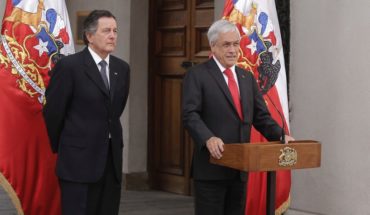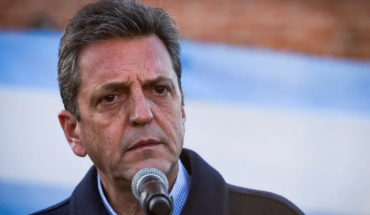On May 28, the Supreme Court ruled one of the most emblematic cases of pollution in the Bahí A de Quintero, windows and Puchuncaví. The ruling has been qualified for some as “symbolic and remediation” by explicitly recognizing the historical violation of fundamental rights such as the right to life, health and living in a pollution-free environment. For others, it is a true “Supremazo”, both for establishing a Indubitada State responsibility for its inaction-even more considering that at least since the year 2012 the state had knowledge of the serious pollution situation to which The population was exposed, as by the nature of the 15 ordered measures.
It is No less necessary to consider that the court has ordered, among these measures, to amend the Valparaíso regulatory Plan; To transfer from the affected area to all children and adolescents each time the existence of levels of pollution that affect them in particular is recorded; Create a Web site that will account for the progress and results of each of the ordered measures. These measures are undoubtedly exceptional in this type of judicial rulings.
We are certainly faced with a transcendent environmental flaw. Something more than “symbolic”, but rather less than a “Supremazo”.
It is necessary to question whether, with the resolve of the Tribunal, the fundamental rights infringed are effectively restored. That is, if the rule of law is recovered from the lives of people, their health and their right to live in a pollution-free environment. The foregoing makes sense in finding that the ruling itself considers it pertinent to analyse a possible violation of such rights “as a whole”, since “a serious health impact, because of a severe environmental emergency, also threatens life and, in all case, the physical or, at least, psychic, integrity of the persons “(recital 10 °).
If what is sought is the timely restoration of these rights-attended to the essential value of them for the full life of the inhabitants of the affected area-the answer should initially be negative.
The 15 measures are intended for the adoption, revision and dictation of various instruments of a state nature, so that, through court-ordered compliance, the protection of the rights concerned is guaranteed. All of this is not immediate. On the contrary, and as noted by the judgement itself, will imply periods that are far from short or deadlines.
Indeed, although the court sets a term of one year (recital 43 °), it may be extended, and further, the changes to be met must comply with the relevant legal and regulatory requirements.
The Supreme Court identifies and reinforces the duties of the various agencies of the state involved, whose application has tended to suffer the abandonment or forgetfulness by these divisions; assigns policy responsibilities; It emphasizes the obligatory of international treaties and commitments signed by Chile in Environmental matters; and orders measures-emphasizing the imperative nature of the same: “You must carry out”, “the executive will Dispose”; “It will start”, among other expressions.-. Of course, all this does not imply an immediate restoration of the guarantees infringed. The way to achieve this will be at least medium-term.
Complexity is obvious. It is not easy to solve a problem that has been dragged on for many decades and has intensified in the last 25 years. Just mention the overlapping relationship of countless instruments, such as the structural practices and gaps in the environmental impact assessment system-with, for example, swarms of environmental impact statements or the absence of an instrument to Evaluate installations before the year 1993-. And, on the other hand, insufficient environmental standards, prevention and decontamination plans, the standards of which have been repeatedly questionnaires in the species; And what to say about deficiencies in territorial planning.
The relevance of the ruling is undeniable. Clearly, it confirms the existence of a population violated in their fundamental rights. And, in turn, it accurately identifies the illegalities in which the organs of the State administration have been incurred with powers in the affected area, ordering them, with sufficient determination, to execute precise measures. It is not an affectation of the principle of separation of powers-or, as some have pointed out, an “intrusion of a state power against another”-but, on the contrary, it calls on the organs of the State administration to comply with the duties legally Established.
From this judgement, there should be a before and after for the Ministry of the Environment, the Environmental Assessment Service, the Ministry of Housing and Urbanism, the municipalities directly involved, among others, regarding how to comply with Their state duties in those areas highly intervened from an industrial point of view, as are the so-called “sacrificial zones”.
However, although the relevance is undoubted, it fails to be a “Supremazo”. To confirm the latter, it is necessary to stop in the minority vote of Minister Aránguiz, which if it had been the majority, we would clearly face a real “supremazo”. But that was not the case.
Minister Aránguiz maintains that the matter must be resolved under the “precautionary prism” of the Political Constitution. Rightly, it enhances a series of elements on which there is consensus of its uncertain character: the ignorance of the origin of the toxicity of the air, of who or who are the authors and what is the appropriate mechanism of overcoming the problem. However, it confirms, like the majority vote, “that the damage actually occurs to the people who are intended to protect.”
In this way, the application of the “precautionary prism” would, for this minority vote, lead to the suspension of the operation of public and private companies operating in the Windows Industrial complex for 90 days. Period in which the Authority should develop a prevention and decontamination programme for the affected sector. These measures: the suspension of operations and the peremptory elaboration of the aforementioned programme, are truly surprising and exceptional, both by the entity and by the urgency of the gravity expressed therein.
If such minority prevention had been the majority ruling, we would be in a position to affirm the direct restoration, at least for that period, of the rights to life, to health and to live in an environment free of pollution from the inhabitants of the Affected area. However, its permanent solution will be, as indicated, difficult and long-standing.
In short, the Supreme Court, once again, has reinforced the role of the State and its bodies in the area of environmental protection. However, in order to restore the rule of law, it remains that the latter receive the coup, diligently fulfilling the order, and that the stakeholders exercise the follow-up of the measures through the mechanisms provided by our legal system.
Marie Claude Plumer Bodin, lawyer, environmental specialist, consultant partner of Chaves, Awad, Contreras, Shürmann.
Rocío Parra Cortés, research lawyer, center of the Law of the Sea, Faculty of Law Pontificia Catholic University of Valparaiso; PhD candidate Cotitling University of Alcalá de Henares and Pontifical Catholic University of Valparaiso.
The content poured in this opinion column is the sole responsibility of its author, and does not necessarily reflect the editorial line or position of the counter.





